LIBS 1910: E-Waste Recycling - Environmental Science Presentation
VerifiedAdded on 2023/05/30
|10
|653
|185
Presentation
AI Summary
This presentation defines electronic waste (e-waste) and explores the recycling processes involved in recovering valuable materials from discarded electronic devices. It highlights the increasing global concern over e-waste due to rapid technological advancements and the environmental and health hazards associated with improper disposal. The presentation discusses the environmental issues, such as the exploitation of natural resources, pollution from hazardous chemicals, and harm to biodiversity. It also covers the economic and social benefits of e-waste recycling, including energy savings, job creation, and the recovery of valuable metals. Furthermore, it addresses political and legal aspects, such as the export of e-waste to developing countries and the associated global trade and security concerns. The presentation concludes by emphasizing the importance of proper e-waste management and recycling to mitigate environmental damage and promote sustainable practices.
1 out of 10
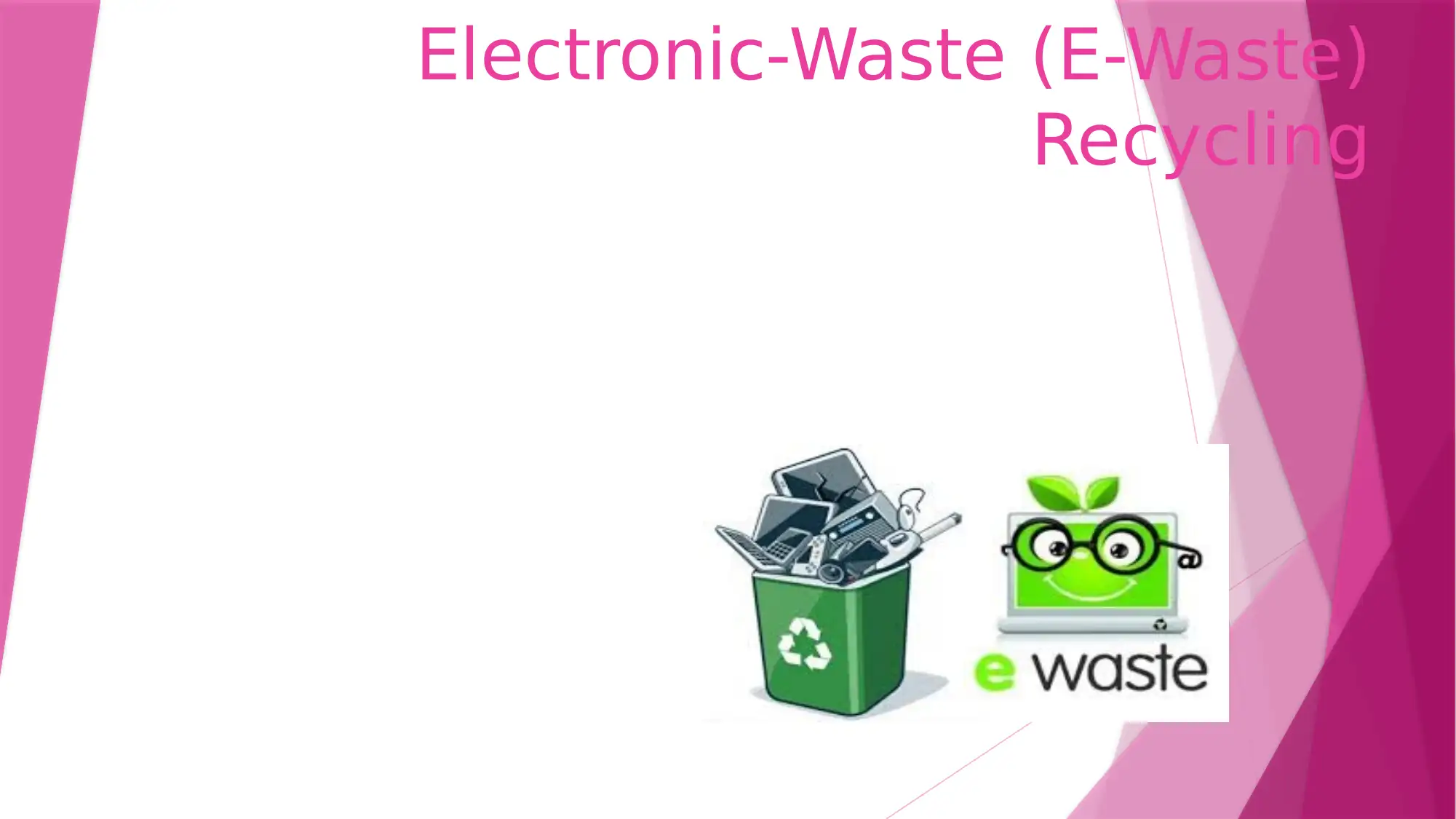
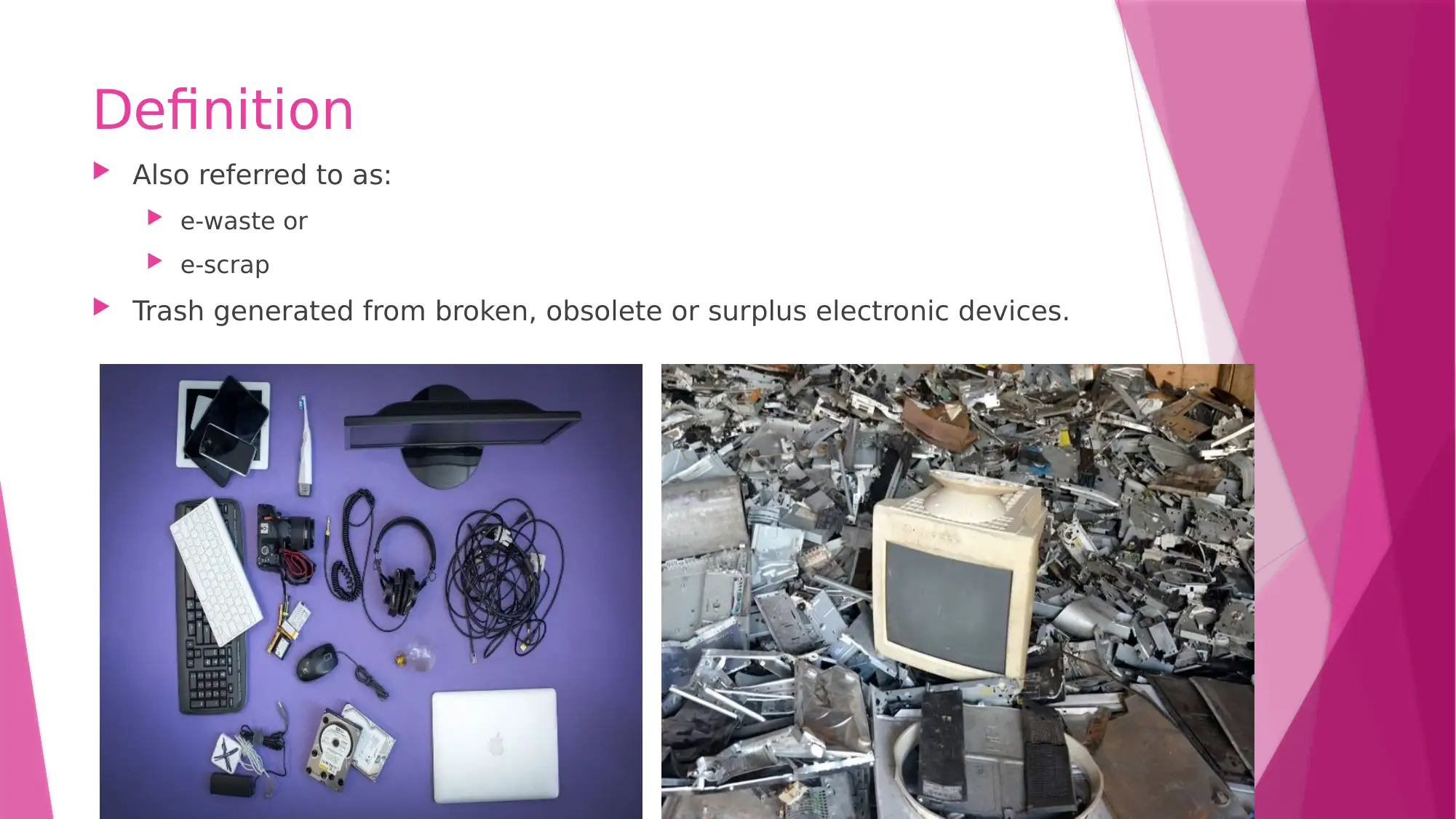
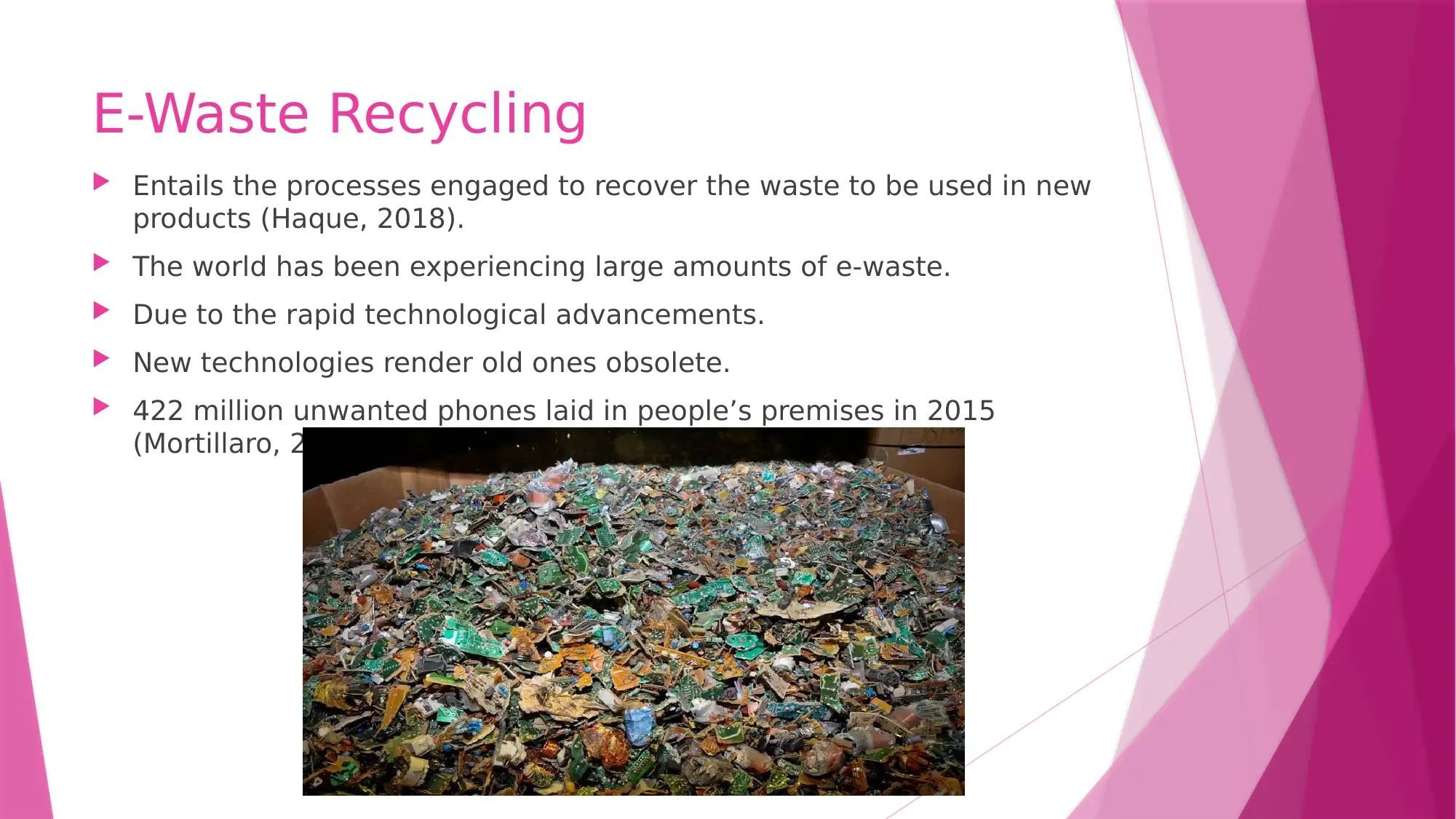

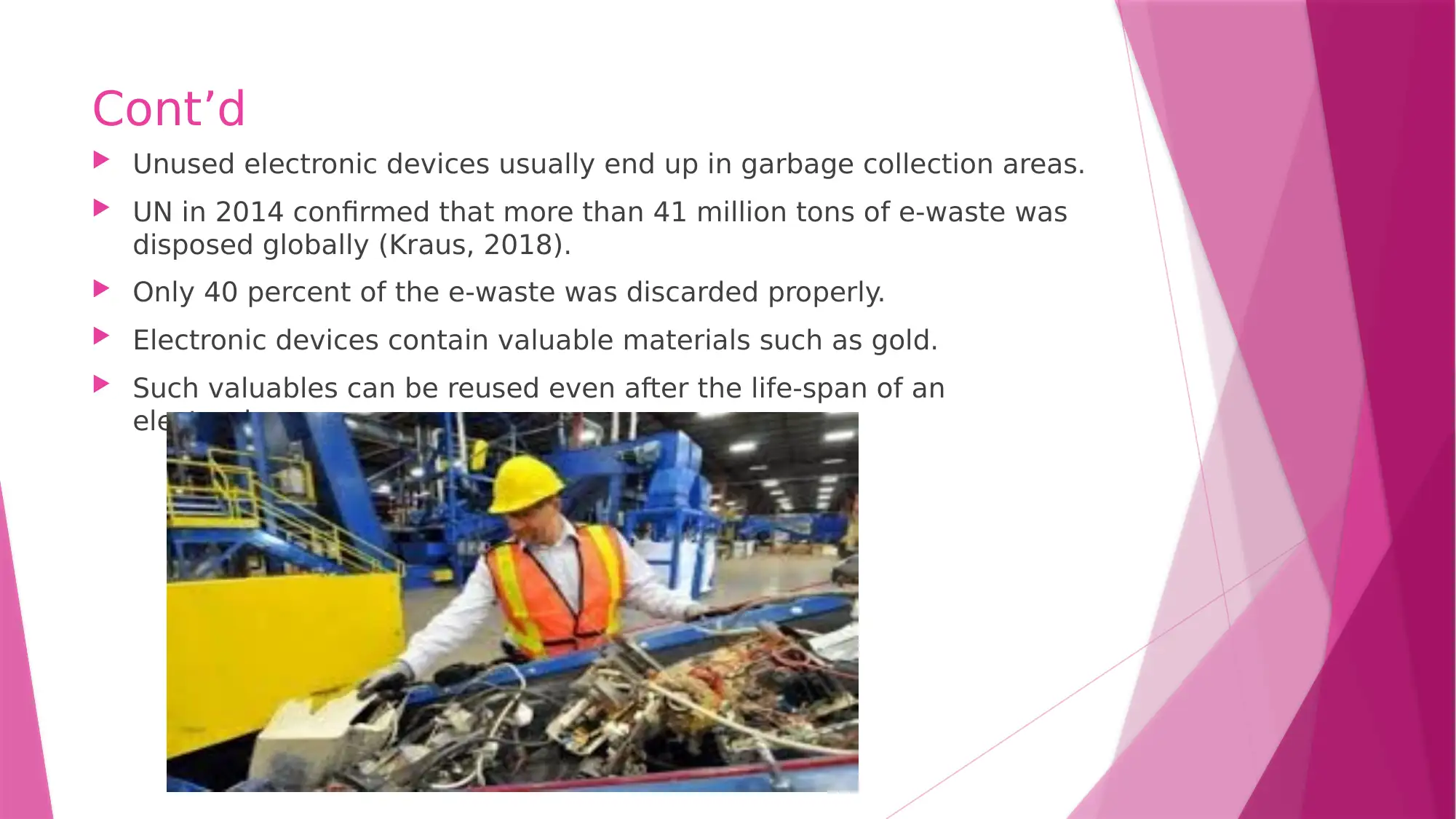
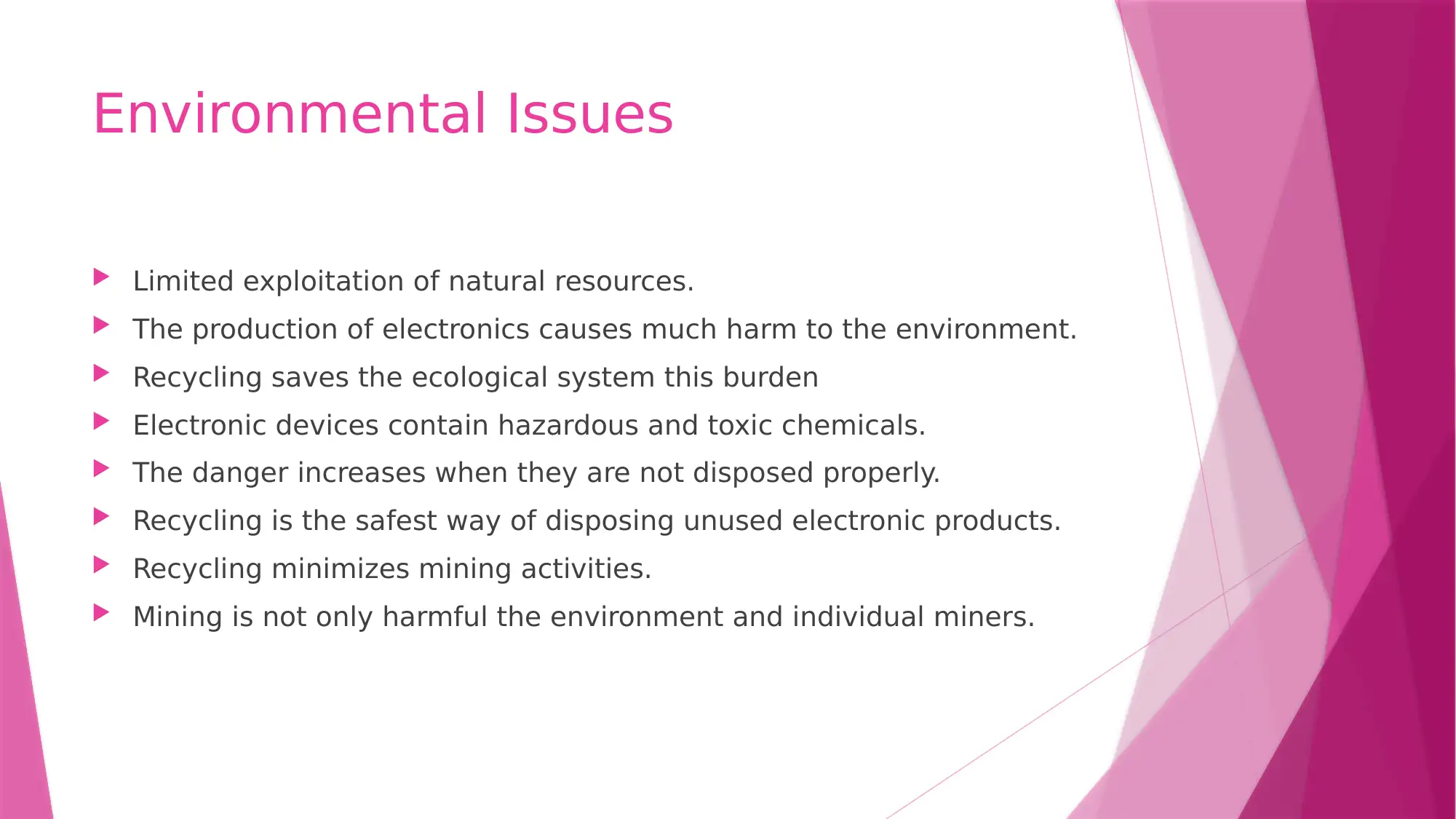
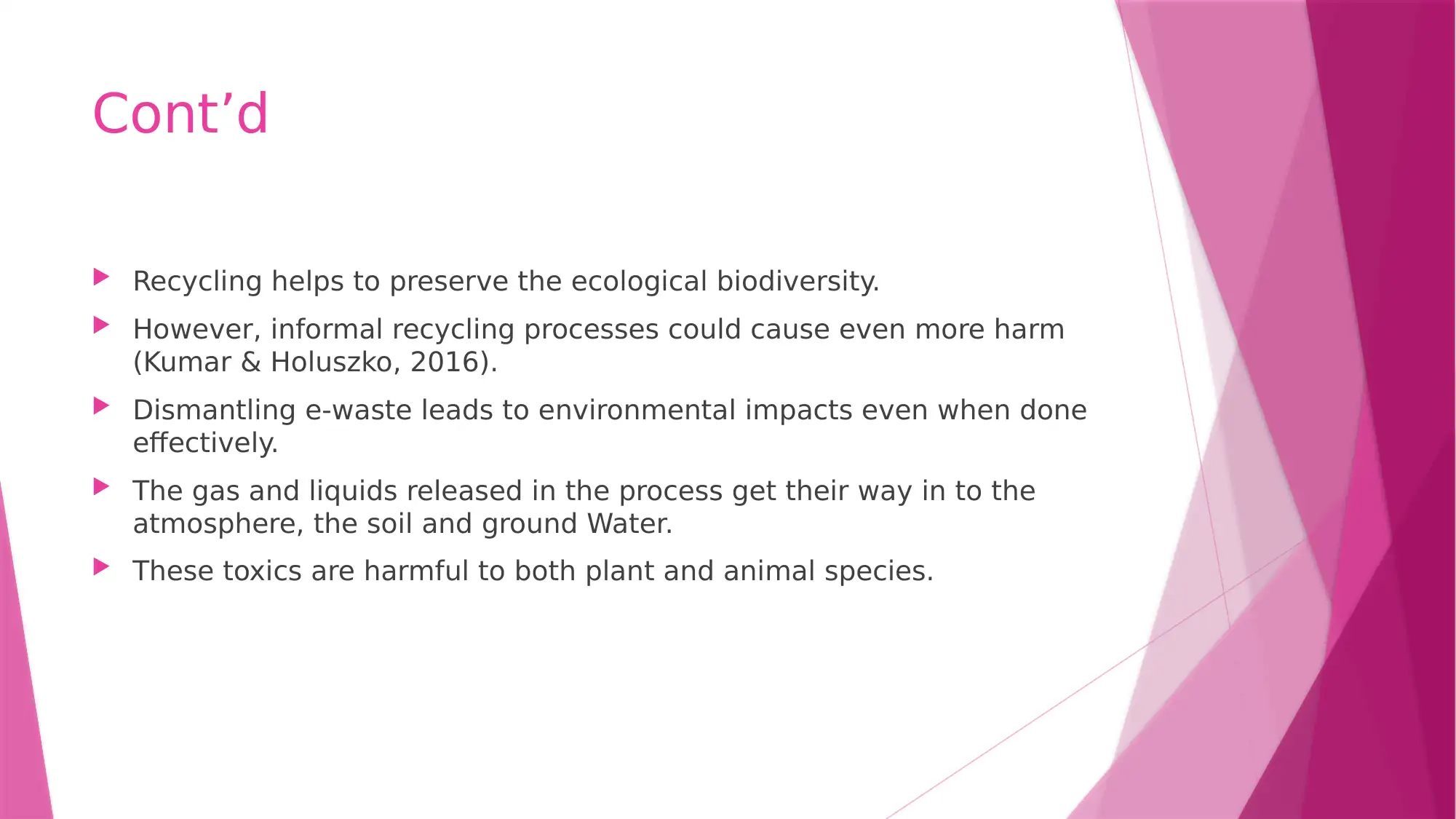
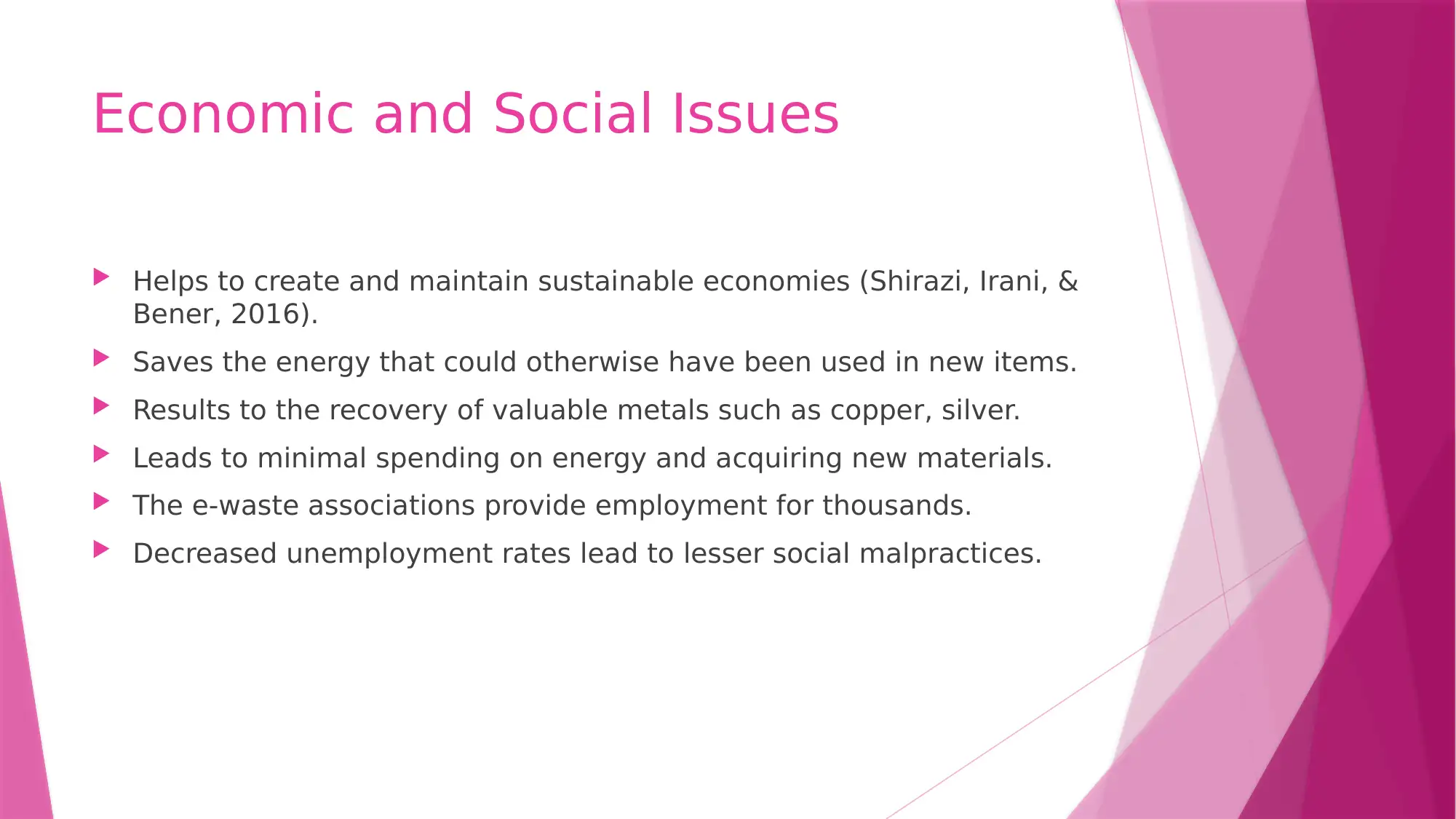
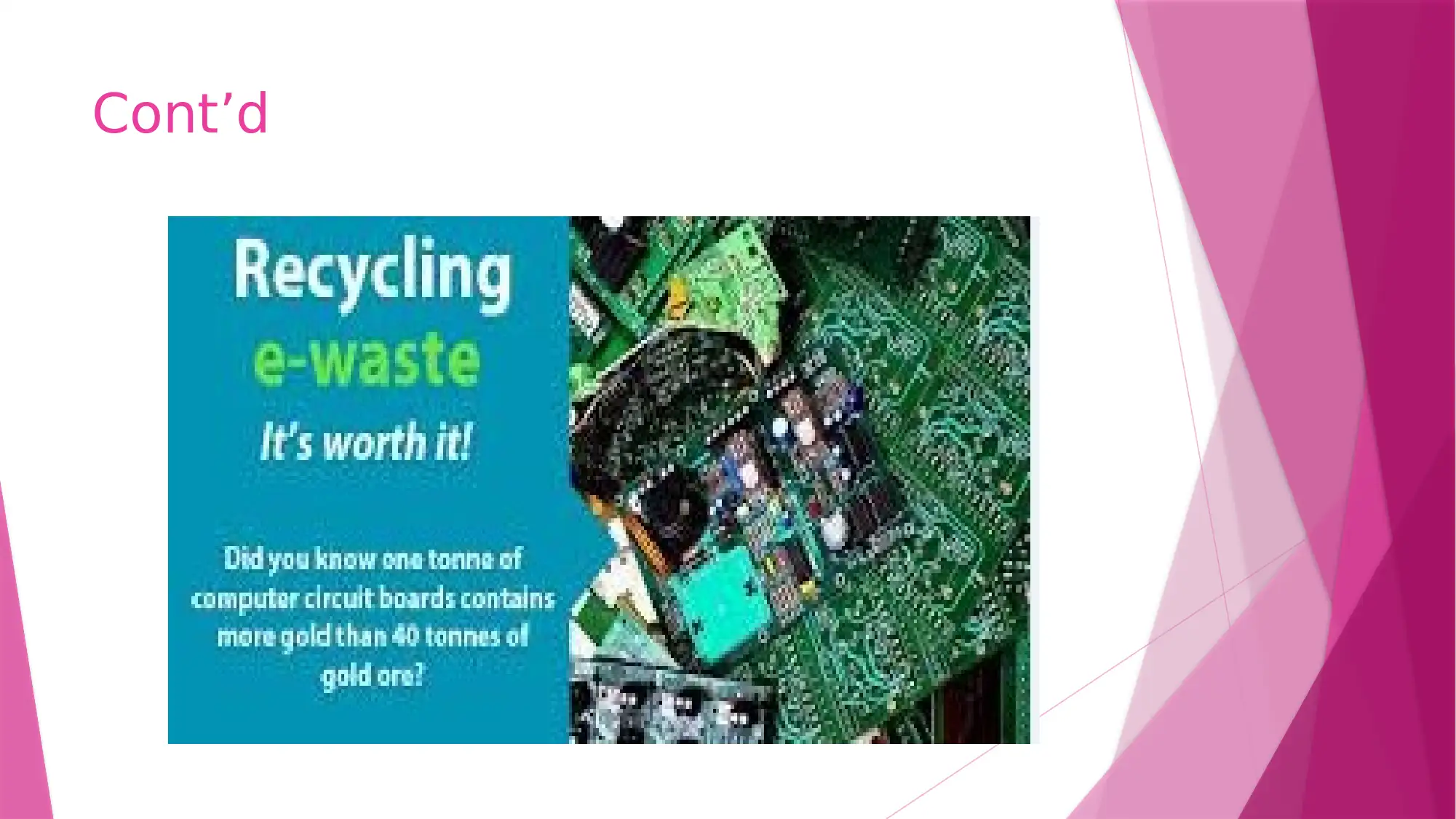
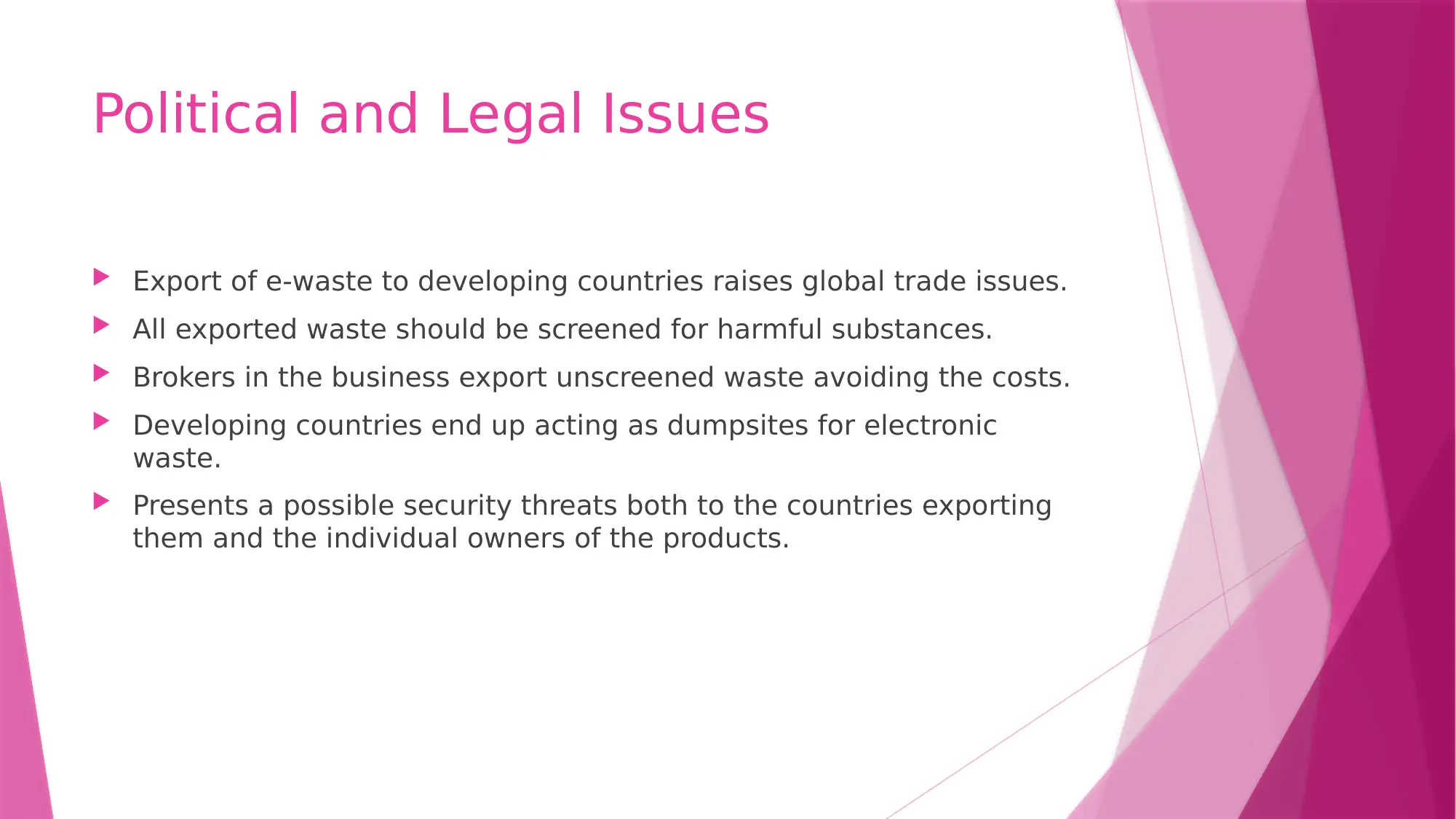
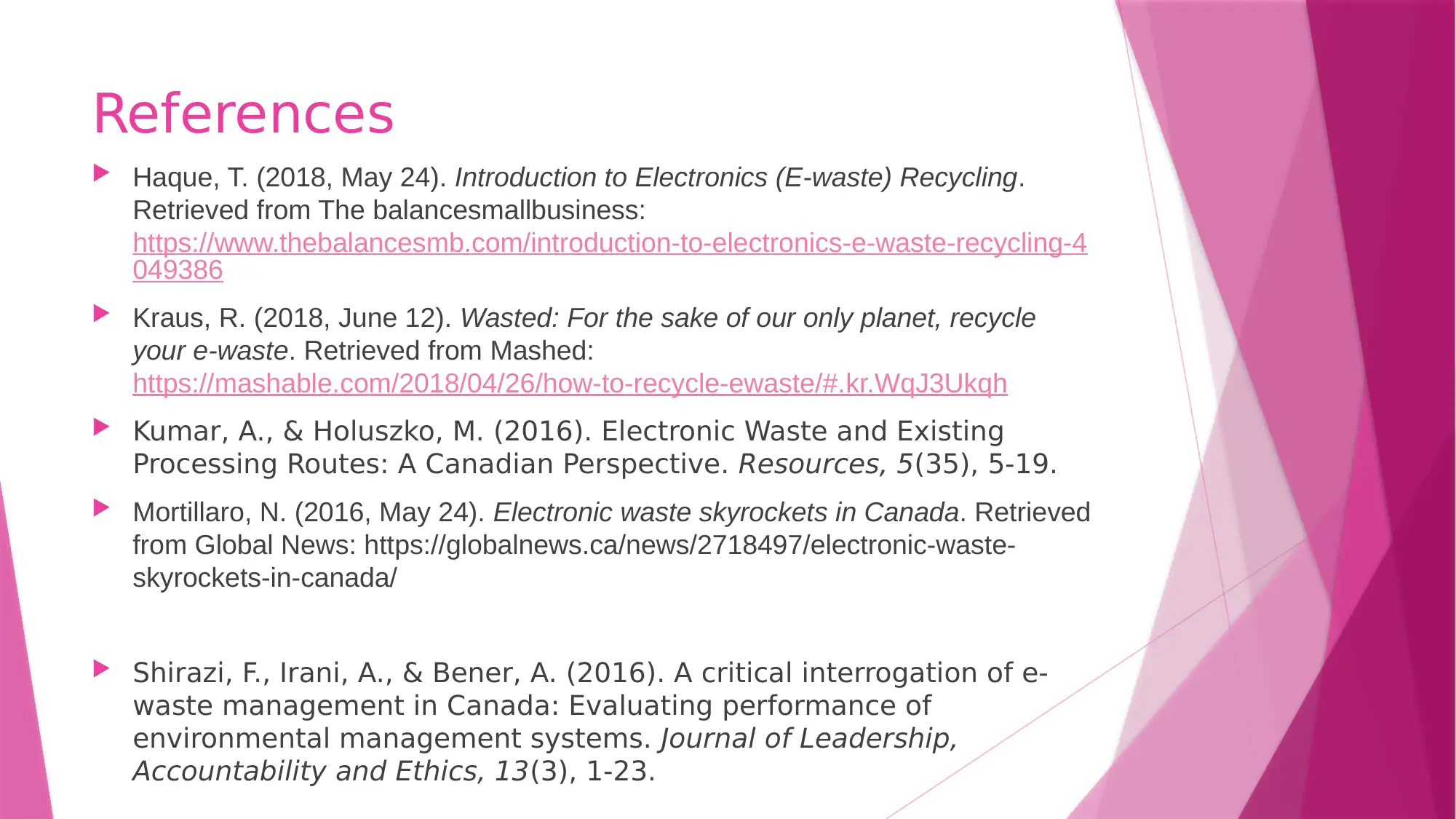


![[object Object]](/_next/static/media/star-bottom.7253800d.svg)